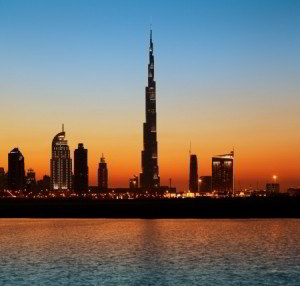 Man has always had a passion to build new things to improve their way of life. And throughout history there have been some truly monumental feats in construction. We all know about the Great Pyramids and the Great Wall of China, which are incredible accomplishments given the lack of resources at their disposal. Modern engineering notwithstanding, there have been some pretty incredible modern engineering projects over the past twenty years.
Man has always had a passion to build new things to improve their way of life. And throughout history there have been some truly monumental feats in construction. We all know about the Great Pyramids and the Great Wall of China, which are incredible accomplishments given the lack of resources at their disposal. Modern engineering notwithstanding, there have been some pretty incredible modern engineering projects over the past twenty years.
Kansai Airport
The Kansai Airport in Osaka, Japan completed in 1994 is a $20 billion airport island in Osaka Bay. Because Osaka is among the most crowded regions in not only Japan but the world, when the time came for a new airport, building into the bay was the only option. The first ever airport built on an artificial island of 2.5 miles by 1.5 miles, made solely for the airport, it took six years for engineers to complete.
Accommodating air traffic for the second most populous Japanese metropolitan area, the Kansai Airport actually sits atop adjustable columns to compensate for the soft soil of the manmade Kansai Island. In addition to the state of the art facility accommodating air traffic for 14 million passengers, the building and island is actually designed to withstand trauma from the most vicious earthquakes and typhoons, both of which it’s already survived.
The Millau Viaduct
The Millau Viaduct in France opened in 2004 with the highest road bridge deck in Europe (12th in the world) and is the tallest bridge in the world. Its tallest mast towering 1,125 feet above the ground below, spans the Tarn River. The enormity of the bridge is necessary to traverse the deep, hilly Tarn River Valley.
Connecting Spain and France, the bridge stretches over 2,500 feet and, in addition to having the tallest road deck in Europe and the tallest bridge mast in the world, has the highest bridge pylons in the world. Having actually been awarded the International Association for Bridge and Structural Engineering Outstanding Structure Award, the Millau Viaduct cost EUR400 million to construct over the course of three years.
The Palm Islands
Jutting out into the Persian Gulf off the Dubai coast are the Palm Islands. Completed in 2006 and 2008, the islands are actually a series of manmade peninsulas surrounded by a break-wall and from above form palm tree design. Each is a little over 6 miles by 6 miles, including the fronds and break-wall, and was built to attract tourism dollars to account for depleting Gulf oil revenue.
What’s unique about the manmade islands, beyond the immense size, is it was constructed using entirely sand and rock with no steel or cement. The volume of reclaimed limestone, rock and dredged sand used to build the Palm Islands was so significant in fact, combined it’s enough to make a small wall that would go around the globe three times.
Composed of 210 million cubic meters cubic meters of sand and rock, sprayed from dredging ships, the Palm Islands took 5 years to construct. Serving as a playground for tourists and home to the rich, there are two more peninsula networks currently underway to accompany the existing engineering feat.
The Burj Khalifa Skyscraper
The tallest manmade structure in the world, the Burj Khalifa skyscraper tops out at a towering 2,722 feet. Not far from the Palm Islands in Dubai, the skyscraper is also the world’s tallest freestanding structure. Housing 163 floors, Burj Khalifa took about six years to complete, opening in 2010, and cost $1.5 billion dollars to build.
In the face of consistent 30 mph winds, building construction slowly pressed on implementing cranes towering hundreds of feet in the sky. It took more than 58,000 cubic yards of concrete of more than 110,000 tons consuming over 22 million man hours to complete. Moreover, the thousands of feet in impressive exterior walls frame-out more than 24,300 windows. In 2010, the Burj Khalifa was awarded the Most Innovative Structure from SEAOI Excellence in Structural Engineering.

Leave a Reply